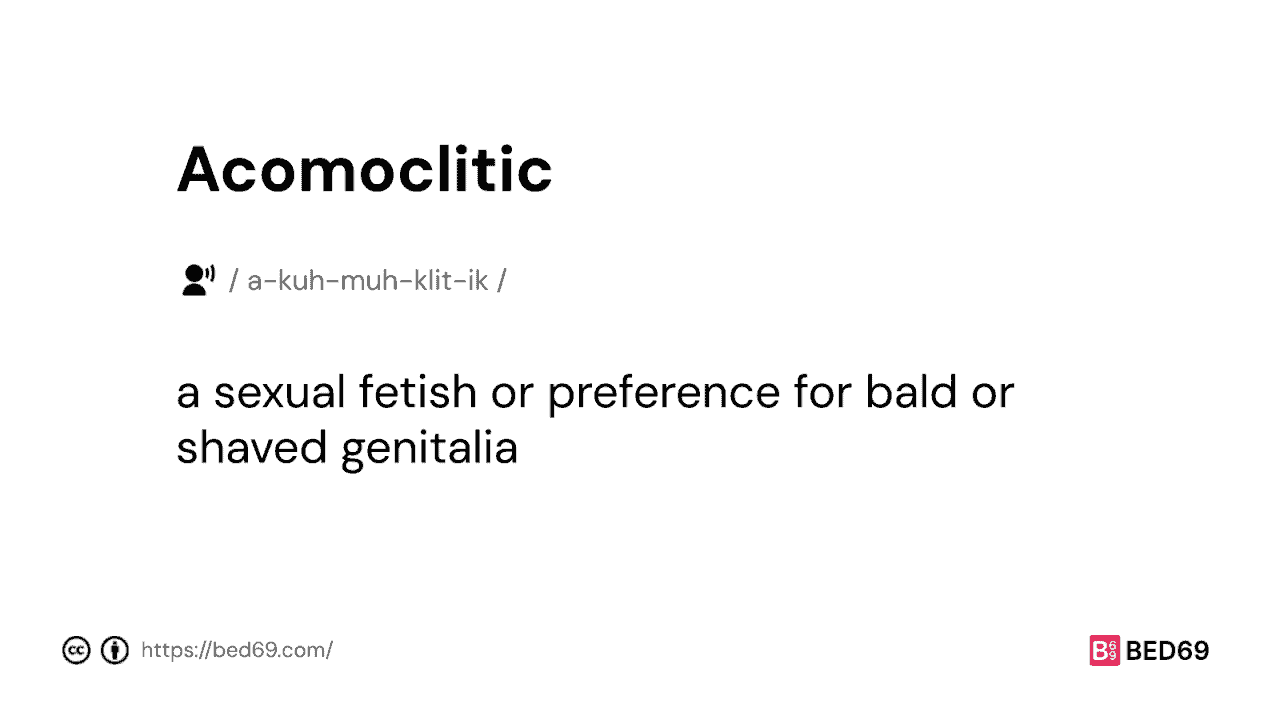What is Acomoclitic?
Acomoclitic is a term used to describe a sexual fetish or preference for bald or shaved genitalia, particularly the vulva or scrotum. It is derived from the Greek word “acomos” meaning “unhairy.” People with this fetish may find the appearance of bald genitalia sexually attractive and may engage in sexual practices to achieve or maintain a smooth, hairless appearance.
Acomoclitic pronunciation: / a-kuh-muh-klit-ik /

What sparks acomoclitic desires
What sparks acomoclitic desires can vary widely among individuals. Some are drawn to the aesthetic appeal of hairless genitalia, finding it visually stimulating and sexually attractive. For others, the tactile sensation of smooth skin may be a key factor in their preference. People with acomocliticism may also associate hairlessness with cleanliness and hygiene, leading to a heightened sense of arousal.
Engaging in activities that involve hair removal, such as shaving or waxing, can be a shared experience for acomoclitic partners, adding a layer of intimacy and excitement to their sexual encounters. This act of grooming may even be incorporated into foreplay, deepening the connection between individuals who share this preference.
Despite the association of hairless genitals with youthfulness, acomoclitics typically emphasize that their attraction is not linked to age but rather to personal grooming choices and confidence.
For many acomoclitics, the preference for bald or shaved genitalia is akin to any other physical attraction, such as a preference for certain body types or features. While acomocliticism can be a significant aspect of an individual’s sexuality, it generally does not require treatment unless it becomes disruptive to daily life.
Various therapeutic approaches, such as psychoanalysis or cognitive therapies, can help individuals navigate and understand their acomoclitic desires if needed.
The psychological aspects of acomoclitic preferences
Acomoclitics may find themselves fixated on the idea of hairless genitals, often imagining and desiring this particular physical trait. They might seek out partners who share this preference or engage in hair removal practices themselves. For them, the appeal lies in both the aesthetics and the tactile experience of smooth skin. Many acomoclitics also believe that hairless genitalia are cleaner and more hygienic, contributing to their attraction.
Engaging in hair removal activities, such as shaving or waxing, can be a source of arousal for acomoclitics, sometimes even becoming a part of their intimate interactions. Despite the association of bald genitalia with youth, acomoclitics typically emphasize that their preference is not about seeking out partners who appear younger. Instead, they often view the act of hair removal as a form of self-care and empowerment, enhancing their confidence and control over their bodies.
Acomocliticism can vary from a simple preference to a more intense fetish, impacting individuals differently. While it usually doesn’t require treatment unless it disrupts daily life, therapies like psychoanalysis or cognitive approaches can help address any concerns or challenges associated with acomoclitic desires.
In essence, acomocliticism represents a unique aspect of human sexuality, reflecting personal preferences and perceptions of beauty and cleanliness within the realm of intimate relationships.
Explore other interesting terms:
